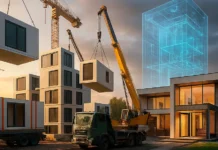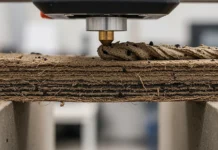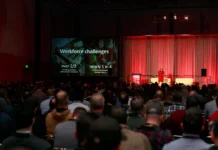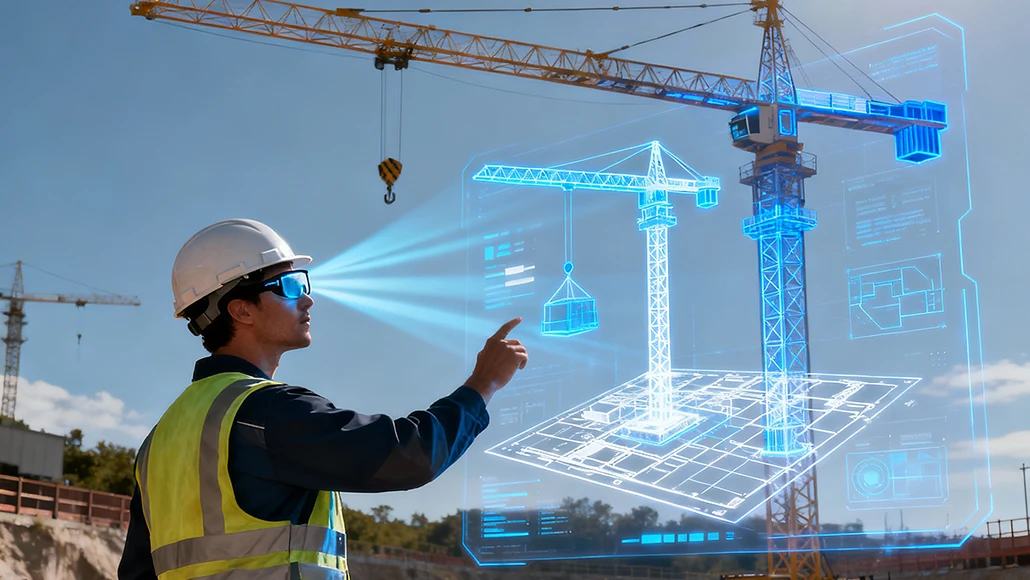VR Tours and AI Lift Technology Transform Construction Planning
The construction industry stands at the intersection of virtual innovation and artificial intelligence as VR AI lift technology construction planning fundamentally reshapes how projects approach design validation, risk assessment, and operational preparation. These technologies enable stakeholders to experience projects before physical construction begins, test lifting strategies in simulated environments, and optimize approaches through iterative digital refinement. The convergence of virtual reality tours and AI-powered lift planning creates unprecedented capabilities that improve project outcomes while reducing costs and schedule risks.
The Evolution of Construction Planning Methodologies
Traditional construction planning relied on two-dimensional drawings, physical models, and mental visualization to communicate design intent and operational strategies. While these methods served the industry adequately for decades, they imposed limitations that sometimes manifested as costly field modifications, schedule delays, or safety incidents resulting from planning oversights. The inability to fully comprehend spatial relationships, operational sequences, or potential conflicts until physical construction revealed them created inefficiencies that better planning tools might prevent.
VR AI lift technology construction planning addresses these limitations by creating immersive digital environments where stakeholders experience projects with depth perception, scale awareness, and spatial understanding that flat drawings cannot provide. Combined with artificial intelligence that analyzes lifting requirements, optimizes equipment selection, and validates operational feasibility, these technologies transform planning from educated guesswork into data-driven decision-making supported by comprehensive simulation and validation.
The adoption trajectory follows patterns observed in other construction technology implementations. Early adopters—typically large contractors working on complex projects where planning sophistication directly influences profitability—demonstrate technology value and refine application methodologies. As capabilities mature and costs decrease, adoption expands to mid-sized firms and eventually becomes standard practice across the industry. Current trends suggest this progression accelerates as virtual reality hardware becomes more accessible and AI algorithms demonstrate consistent planning improvements.
Virtual Reality Site Visualization and Design Validation
Virtual reality technology enables stakeholders to conduct immersive site tours before physical construction begins. Wearing VR headsets, users explore digital representations of planned projects at full scale, experiencing spatial relationships and design elements with realism that approaches physical presence. This capability transforms design review, enabling identification of problems and opportunities that remain invisible in conventional planning approaches.
Design validation through VR proves particularly valuable for complex structures where spatial coordination challenges conventional visualization. Structural engineers can virtually position themselves within planned facilities, verifying that clearances, access routes, and equipment locations meet requirements. Mechanical and electrical trades identify conflicts between building systems that might escape notice during two-dimensional coordination. Architects assess aesthetic qualities and spatial experiences that determine whether designs achieve project objectives.
The immersive nature of VR tours facilitates stakeholder communication and consensus-building. Clients unfamiliar with technical drawings gain intuitive understanding of planned projects through virtual walkthroughs. This comprehension improves decision-making quality and reduces the change orders that result from misunderstood design intent. Regulatory reviewers can virtually inspect proposed facilities, potentially accelerating permit approvals by demonstrating compliance more effectively than conventional documentation.
For lifting operations specifically, VR enables visualization of crane positioning, reach envelopes, and load paths within project contexts. Planners can virtually position cranes and verify that equipment reaches required areas without conflicts. Load paths can be traced through three-dimensional space, identifying obstacles or clearance concerns that warrant equipment repositioning or selection changes. This virtual validation reduces field surprises and improves confidence in execution plans.
Artificial Intelligence for Lift Planning Optimization
AI algorithms bring computational capabilities to VR AI lift technology construction planning that complement human expertise with analysis speed and thoroughness impossible through manual approaches. These systems process project data—including building geometry, component weights, site constraints, and equipment capabilities—to recommend lifting strategies optimized for efficiency, safety, and cost effectiveness. The AI considers thousands of variables and scenarios simultaneously, identifying approaches that human planners might not recognize.
Equipment selection represents a fundamental AI application. Given project requirements, site conditions, and available equipment options, AI systems evaluate which crane configurations offer optimal solutions. The analysis considers reach requirements, capacity needs, site access constraints, and operational efficiency to recommend equipment that balances capability with cost effectiveness. This computational approach prevents both under-specification that forces mid-project equipment changes and over-specification that unnecessarily increases rental expenses.
Crane positioning optimization uses AI to determine locations that maximize operational efficiency while satisfying safety and regulatory requirements. The algorithms evaluate numerous potential positions, assessing each against criteria including reach coverage, load path efficiency, ground conditions, and proximity conflicts. The recommended positions optimize coverage while minimizing repositioning frequency and maintaining safe separations from structures, utilities, and other cranes.
Lift sequence planning benefits from AI capabilities to evaluate alternative sequences and identify optimal approaches. For projects requiring hundreds or thousands of lifts, determining efficient sequences that minimize crane idle time, prevent resource conflicts, and maintain logical construction progression challenges human planning capacity. AI systems generate and evaluate numerous sequence alternatives, recommending approaches that minimize project duration or optimize other specified objectives.
Risk assessment applications employ AI to identify potential safety hazards and operational challenges. The systems analyze planned operations against databases of historical incidents, recognizing patterns that correlate with problems. When current plans resemble scenarios where difficulties previously occurred, AI alerts planners to risks warranting additional attention. This proactive risk identification enables mitigation strategy development before execution phases, preventing incidents rather than responding after they occur.
Simulation and Testing Capabilities
The integration of VR and AI enables comprehensive simulation of lifting operations before physical execution. Planners create digital representations of planned lifts, including equipment models, structural components, and site environments. The simulation executes operations virtually, revealing potential problems and enabling refinement without physical resource commitment. This capability proves particularly valuable for complex or critical lifts where execution errors would generate severe consequences.
Load behavior simulation models how components respond during lifting, considering factors including weight distribution, flexibility, and connection characteristics. This analysis identifies loads requiring special rigging, stability concerns, or handling procedures that prevent damage. For unusual shapes or particularly heavy items, simulation results inform rigging design and operational procedures that ensure safe handling.
Environmental impact simulation evaluates how wind, temperature, or other conditions affect operations. Virtual testing under various scenarios identifies weather thresholds beyond which operations should cease and informs contingency planning for conditions that might develop during critical lift windows. This preparedness prevents delays resulting from unforeseen environmental challenges.
Collision detection algorithms automatically identify potential conflicts between moving loads, crane components, existing structures, or other site elements. The virtual environment tests whether planned load paths maintain adequate clearances throughout movement sequences. When conflicts emerge, planners modify approaches and retest until collision-free paths are achieved. This iterative refinement process occurs rapidly in virtual environments, avoiding the schedule impacts and safety risks that physical testing would entail.
Operator training applications leverage simulation capabilities to prepare personnel for complex operations. VR training systems place operators in realistic virtual environments where they practice procedures and decision-making without physical equipment access. AI-powered training modules adapt difficulty based on operator performance, providing appropriately challenging scenarios that build competence progressively. Research demonstrates that VR-trained operators achieve proficiency faster and demonstrate higher accuracy than conventionally trained counterparts.
Integration with Building Information Modeling
VR AI lift technology construction planning achieves maximum value when integrated with comprehensive BIM environments. These digital project representations contain detailed geometric information, material specifications, construction schedules, and logistical plans. When lifting planning occurs within BIM contexts, analyses incorporate project-specific data rather than relying on generic assumptions, improving recommendation accuracy and execution confidence.
Automated lift planning modules extract component information directly from BIM models, eliminating manual data entry and ensuring planning reflects actual project requirements. Weight estimates derive from material specifications and geometric dimensions. Required lift locations correspond to final installation positions. Delivery schedules inform when components become available for installation. This data integration ensures lifting plans align with broader project realities.
Four-dimensional scheduling integration connects lifting operations with temporal project progressions. Planners verify that crane availability corresponds with component delivery schedules and that lift timing coordinates with preparatory work completion and subsequent activity commencements. This temporal analysis prevents resource conflicts and identifies critical path activities where schedule attention proves essential.
Collaborative planning environments enable distributed teams to contribute expertise regardless of geographic location. Structural engineers, rigging specialists, safety managers, and field supervisors access shared BIM and VR environments, providing input within their domains of expertise. This collaborative approach produces comprehensive plans incorporating diverse perspectives rather than reflecting limited viewpoints.
As-built comparison capabilities leverage BIM integration to verify that executed operations correspond with plans. During construction, laser scanning or photogrammetry creates digital representations of actual conditions. Comparing these as-built models against planned configurations identifies deviations requiring investigation. This verification ensures quality control and provides objective documentation of project execution.
Safety Enhancement Through Virtual Preparation
Safety improvements represent compelling drivers for VR AI lift technology construction planning adoption. Virtual preparation enables identification and mitigation of hazards before personnel exposure, while simulation-based training improves operator competence without incident risks. The cumulative effect creates safer operations that prevent injuries, preserve equipment, and avoid project disruptions.
Hazard identification workshops conducted in VR environments enable safety teams to systematically evaluate planned operations and recognize risks warranting control measures. Participants virtually walk through operational sequences, observing from multiple vantage points and considering what-if scenarios that might generate problems. This structured approach identifies hazards that informal planning discussions might overlook, particularly when multiple simultaneous activities create complex interactions.
Control measure validation occurs through simulation testing that verifies whether proposed safety interventions achieve intended protective effects. Fall protection systems, exclusion zones, or warning systems can be virtually implemented and tested, ensuring effectiveness before physical deployment. This validation prevents the discovery during operations that controls prove inadequate or operationally impractical.
Emergency response planning benefits from VR simulation of potential incident scenarios. Response teams practice evacuation procedures, equipment shutdown sequences, or rescue operations in virtual environments that replicate operational conditions without physical risks. This preparation improves response effectiveness should actual emergencies occur while identifying procedural gaps or resource needs that warrant attention.
Economic Benefits and Return on Investment
The business case for VR AI lift technology construction planning rests on multiple value streams that collectively deliver attractive returns on technology investments. Planning improvements reduce field modifications, schedule delays, and equipment underutilization that generate costs exceeding planning efficiency gains. Safety enhancements prevent incidents that impose direct costs and indirect consequences. Stakeholder communication improvements reduce change orders and disputes.
Field modification prevention yields substantial savings. When planning identifies and resolves problems virtually, expensive on-site corrections—requiring demobilization, redesign, permit revisions, and remobilization—are avoided. Single avoided major modifications often justify technology investments, while cumulative prevention of smaller adjustments generates ongoing returns.
Schedule acceleration results from improved planning precision and reduced problem-solving delays during execution. Projects completing earlier generate benefits including reduced financing costs, earlier revenue generation, and improved organizational capacity to pursue additional work. For owners, facility availability advances, producing operational advantages whose value may substantially exceed direct construction cost savings.
Equipment utilization optimization reduces rental expenses and maximizes productive use of owned assets. AI-driven recommendations ensure appropriate equipment selection and positioning that minimizes idle time and repositioning frequency. The resulting efficiency improvements translate directly to cost reductions through shorter rental periods or capacity for additional project work with existing equipment fleets.
Future Technological Trajectories
The evolution of VR AI lift technology construction planning continues as underlying technologies advance and application methodologies mature. Hardware improvements deliver higher resolution displays, wider fields of view, and more comfortable extended-wear experiences. Software advances enable more realistic simulations, more sophisticated AI analytics, and seamless integration with other construction technology platforms.
Augmented reality convergence enables mixed reality approaches where digital information overlays physical environments rather than completely replacing them. Field personnel might use AR devices that superimpose virtual load paths, clearance indicators, or instructional information onto actual sites, merging planning outputs with execution environments. This capability bridges planning-execution gaps and provides real-time guidance that improves operational precision.
Cloud-based platforms enable remote collaboration that transcends geographic constraints. Project teams distributed globally can simultaneously experience shared VR environments, conduct design reviews, and refine plans through real-time interaction. This capability proves particularly valuable for international projects or when specialized expertise resides distant from project locations.
The maturation of digital twin technology creates persistent virtual representations that mirror physical projects throughout lifecycles. These digital twins integrate VR visualization, AI analytics, and real-time sensor data from constructed facilities. For lifting operations, digital twins enable ongoing optimization as operational experience accumulates and conditions evolve, supporting continuous improvement rather than one-time planning applications.
As VR AI lift technology construction planning capabilities expand and adoption broadens, these approaches will establish new industry standards for planning thoroughness, stakeholder engagement, and operational preparation, fundamentally raising expectations for project delivery quality and demonstrating that traditional planning methods no longer suffice for contemporary construction demands.































